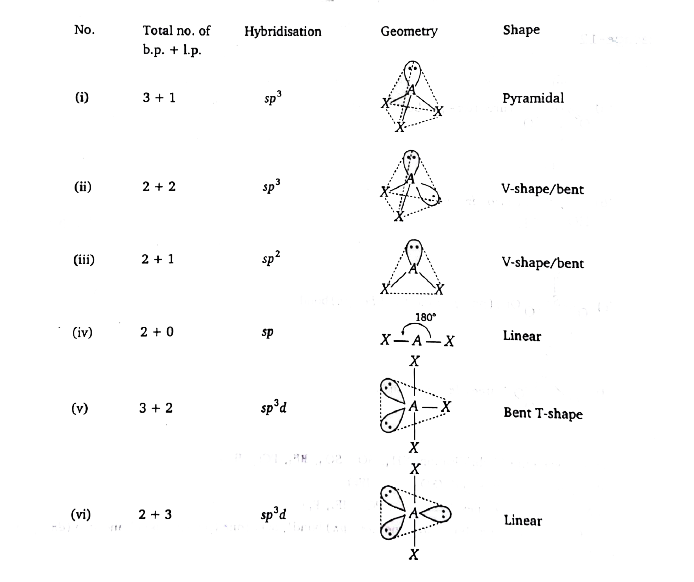Which of the following combination of bond pair (b.p.) and lone pair (l.p.) give same shape ?
(i) 3 b.p.+1 l.p. (ii) 2 b.p.+2 l.p. (iii) 2 b.p.1 l.p. (iv) 2 b.p. + 0 l. p.
(v) 3 b.p. +2 l.p. (vi) 2 b.p.+3 l.p.
ii and iii
iv and v
iv and vi
iii and vi
The correct Answer is:A, C
Topper's Solved these Questions
- BOOK - VK JAISWALCHAPTER - CHEMICAL BONDING (BASIC)EXERCISE - MATCH THE COLUMN25videos
CHEMICAL BONDING (BASIC)
- BOOK - VK JAISWALCHAPTER - CHEMICAL BONDING (BASIC)EXERCISE - ASSERTION-REASON TYPE QUESTIONS24videos
CHEMICAL BONDING (BASIC)
- BOOK - VK JAISWALCHAPTER - CHEMICAL BONDING (BASIC)EXERCISE - Level 3 (Passive 12)4videos
CHEMICAL BONDING (BASIC)
- BOOK - VK JAISWALCHAPTER - CHEMICAL BONDING (ADVANCED)EXERCISE - SUBJECTIVE PROBLEMS72videos
CHEMICAL BONDING (ADVANCED)
- BOOK - VK JAISWALCHAPTER - CO-ORDINATION COMPOUNDSEXERCISE - ASSERTION-REASON TYPE QUESTIONS26videos
CO-ORDINATION COMPOUNDS
Similar Questions
Knowledge Check
- Question 1 - Select One
If the breadth and perimeter of a rectangle are in the ratio 1:8 and the area of rectangle is 363 cm2, then the breadth of the rectangle is:
A2:1B(√3−1):1C(√3+1):1D2:√3 - Question 2 - Select One
If l, b, p be the length, breadth and perimeter of a rectangle and b, l, p are in GP (in order), then l/b is:
A2:1B(√3−1):1C(√3+1):1D2:√3 - Question 3 - Select One
Shape of the compound depend on type and number of electron pair around central atom . These electron pair repel each other and stay as far as possible . The repulsion sequence is as
L.P−L.P.>B.P.−L.P.>B.P−B.P.
Which of the given compound is planar ?AXeF−5BXeF4CICl−4DAll of these
The first term, last term and common difference of an A.P are respectively a, l and 1. Prove that the sum of this A.P. is 12(a+b)(1−a+b).
View SolutionIf l,b,p be the length , breadth and perimeter of a rectangle and b,l,p are in GP ( in order ) , then l/b is :
View SolutionShape of the compound depend on type and number of electron pair around central atom . These electron pair repel each other and stay as far as possible . The repulsion sequence is as
L.P−L.P.>B.P.−L.P.>B.P−B.P.
Choose the incorrect matchView SolutionShape of the compound depend on type and number of electron pair around central atom . These electron pair repel each other and stay as far as possible . The repulsion sequence is as
L.P−L.P.>B.P.−L.P.>B.P−B.P.
dz2 orbital take part in hybridisationView SolutionTwo moles of an ideal gas undergo the following process :
(a) a reversible isobaric expansion from (P atm, VL) to (P atm , 2VL).
(b) a reversible isochoric change of state from (P atm , 2V,L) to (P/2 atm, 2VL)
(c) a reversible isothermal compression from (P/2 atm, 2VL) to (P atm, VL).
Sketch with labels each of the processes on the same P−V diagram.View Solution


